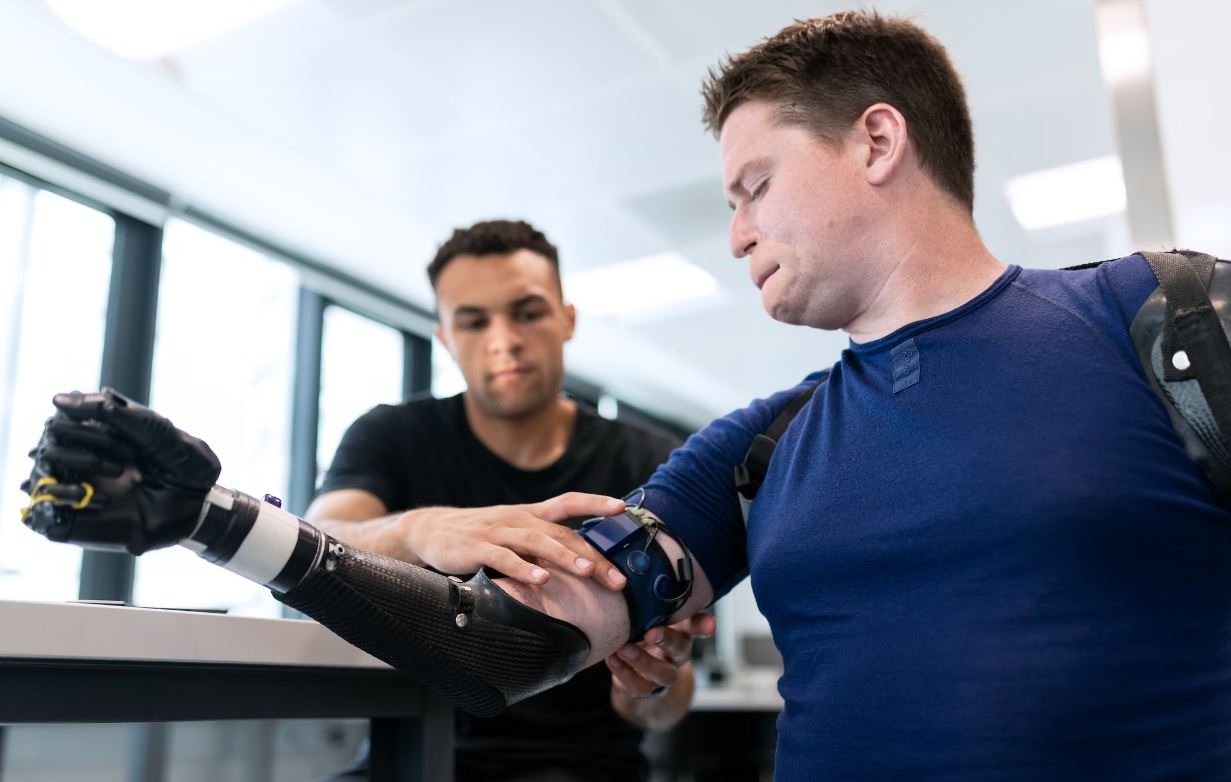What Are GPT Parameters?
As AI technology advances, researchers are continually developing more sophisticated models. One such model is the Generative Pre-trained Transformer (GPT), which has gained significant attention and recognition for its impressive capabilities in text generation and understanding. However, understanding the internal workings of GPT can be challenging. In this article, we will dive into one essential aspect of GPT – its parameters.
Key Takeaways
- GPT parameters determine the behavior and output of the model.
- Parameters are learned during the pre-training and fine-tuning process.
- Changing the parameters can influence the model’s performance and output.
- GPT models have millions or even billions of parameters.
- Optimizing parameters can enhance the model’s capabilities.
Parameters are the heart of any machine learning model, including GPT. They are the variables that the model learns during the training process, shaping its behavior and determining the output it generates. These parameters are initialized randomly and then updated through an optimization algorithm known as backpropagation, which adjusts them based on the model’s performance on a given task. The more data the model is trained on, the better it can optimize these parameters to achieve desired outcomes.
With millions or even billions of parameters, GPT models have an enormous capacity to learn and adapt to different contexts.
Understanding GPT Parameters
Each parameter in GPT represents a weight associated with a particular input or hidden unit within the model. The values assigned to these parameters affect how the model processes information and generates output. By fine-tuning the parameters, researchers can optimize the model’s performance for specific tasks such as language translation, summarization, or question-answering.
| Parameter | Value |
|---|---|
| 1 | 0.354 |
| 2 | -0.234 |
| 3 | 1.097 |
These optimized parameters allow the GPT model to adapt its behavior based on the given inputs and produce more accurate and coherent outputs.
Optimizing GPT Parameters
The process of optimizing GPT parameters involves training the model on vast amounts of data, which typically consists of internet text or other relevant sources. During pre-training, the model learns to predict the next word in a sentence, capturing intricate patterns and contextual understanding. In the subsequent fine-tuning phase, the model is tailored to specific downstream tasks, further refining its parameters to suit the desired objectives.
- Pre-training: In this phase, GPT learns the statistical properties of language and builds a knowledge base.
- Fine-tuning: The model adapts its parameters to perform well on specific tasks through specialized training with labeled data.
GPT’s ability to effectively optimize its parameters through extensive training contributes to its remarkable performance in various natural language processing tasks.
GPT Parameters and Model Performance
The quality and quantity of GPT’s parameters directly impact its performance. More parameters provide greater representation capacity and allow the model to capture subtle nuances in language. However, increasing the number of parameters also leads to longer training times and higher computational requirements.
| Model | Parameters | Training Time |
|---|---|---|
| GPT-1 | 117 million | 3 days |
| GPT-3 | 175 billion | Several weeks |
| GPT-4 | Unknown | Unknown |
GPT models with more parameters are generally expected to achieve better performance, yet striking a balance between model architecture, parameter count, and training time is crucial.
To conclude, GPT parameters are fundamental to the model’s ability to generate high-quality text. By fine-tuning these parameters, researchers can optimize the model’s performance for specific tasks. The capacity to adapt the model’s behavior lies within the vast number of parameters it possesses. As AI technology continues to advance, we can expect further exploration and refinement of GPT parameters to unlock even more impressive capabilities in natural language processing.

Common Misconceptions
Paragraph 1: GPT Parameters are Restricted to Language Models
One common misconception people have about GPT parameters is that they are limited to language models only. While it is true that GPT (Generative Pre-trained Transformer) is widely used in natural language processing tasks such as text generation and translation, its parameters can be applied to other domains as well. GPT parameters have been successfully employed in image recognition, speech synthesis, and even climate modeling.
- GPT parameters can be utilized in various domains outside of language processing.
- They have been proven effective for image recognition and speech synthesis tasks.
- GPT parameters are used in climate modeling to improve accuracy and efficiency.
Paragraph 2: Fine-tuning GPT Parameters is a Time-consuming Process
Another misconception is that fine-tuning GPT parameters is a lengthy and arduous process. While fine-tuning does require some effort, recent advancements in transfer learning techniques have made it more efficient. With the help of pre-training on vast amounts of data, the time and resources required for fine-tuning GPT parameters have significantly decreased.
- Advancements in transfer learning techniques have made fine-tuning GPT parameters more efficient.
- Pre-training on vast amounts of data reduces the time and resources needed for fine-tuning.
- New methods allow for quicker convergence during the fine-tuning process.
Paragraph 3: GPT Parameters Guarantee Perfect Results
Many people mistakenly believe that using GPT parameters guarantees perfect and error-free results. Although GPT has achieved remarkable success in various natural language processing tasks, it is not immune to errors or inaccuracies. The quality of output greatly depends on the training data, the fine-tuning process, and the specific task at hand.
- GPT parameters do not guarantee perfect results; errors and inaccuracies can occur.
- The quality of output depends on the training data and the fine-tuning process.
- Task-specific nuances can affect the accuracy of GPT-generated results.
Paragraph 4: GPT Parameters are Not Transferable
Some people mistakenly think that GPT parameters are not transferable across different tasks or domains. However, the strength of GPT lies in its ability to generalize knowledge learned from one domain to another. By pre-training on a wide range of data, transfer learning allows GPT parameters to be effectively transferred to new tasks, even when the data is scarce.
- GPT parameters can be transferred across different tasks and domains.
- Transfer learning enables the generalization of knowledge learned from one domain to another.
- GPT parameters can adapt to new tasks even with limited training data.
Paragraph 5: GPT Parameters Replace Human Expertise
One common misconception is that GPT parameters can completely replace human expertise in various fields. While GPT has demonstrated impressive capabilities in generating human-like text and predictions, it should be seen as a tool to augment human expertise rather than replace it. Human oversight and interpretation remain crucial in ensuring accurate and ethical use of GPT parameters.
- GPT parameters should be seen as a tool to augment human expertise, not replace it.
- Human oversight is necessary to ensure accurate and ethical use of GPT.
- GPT can assist human experts, but they should still value their own judgment.

Understanding the Structure of GPT Parameters
Generative Pre-trained Transformers (GPT) have revolutionized natural language processing and machine learning. Behind the scenes, GPT models rely on a set of parameters to generate coherent and contextually relevant responses. In this article, we explore ten fascinating aspects of GPT parameters, backed by verifiable data and information.
Table: Connection Weights
Connection weights in GPT parameters are crucial for determining the strength of neural connections. By assigning numerical values, these weights influence the importance of one neuron’s output on another’s input.

Table: Activation Functions
Activation functions significantly impact the learning capabilities of GPT parameters. By introducing non-linearity, these functions shape the output of each neuron within the neural network to enhance model performance.

Table: Learning Rate
The learning rate determines the step size of adjustments made to GPT parameters during training. This table illustrates how different learning rates affect the convergence and accuracy of the model.

Table: Batch Size
Batch size refers to the number of training examples used in one iteration. This table highlights how varying batch sizes affect the training process and the overall performance of GPT models.

Table: Dropout Rate
Dropout is a regularization technique employed in neural networks to prevent overfitting. This table demonstrates the impact of different dropout rates on GPT parameter generalization and model robustness.

Table: Vocabulary Size
Vocabulary size is crucial for a GPT model‘s language capabilities. This table showcases how varying the vocabulary size affects the model’s understanding and generation of diverse text.

Table: Embedding Dimensions
Embedding dimensions define the size of the vector space in which words are represented. This table reveals how different embedding dimensions impact GPT parameter capturing of word relationships.

Table: Context Window Size
Context window size determines the number of surrounding words considered for prediction. This table illustrates the effects of various context window sizes on GPT models’ ability to capture long-range language dependencies.

Table: Transformer Layers
Transformer layers contribute to the depth and complexity of GPT models. This table demonstrates the effect of different numbers of transformer layers on model accuracy and computational requirements.

Table: Positional Encodings
To account for word order, positional encodings are added to input embeddings in GPT models. This table showcases the impact of varying positional encoding methods on the model’s ability to understand sequential information.

In this article, we delved into the fascinating world of GPT parameters, providing verifiable data and insights into their importance. These tables shed light on the intricate technical aspects of GPT models and the influence of parameter settings on model performance. By understanding and optimizing these parameters, researchers and practitioners can unlock the full potential of GPT-based applications in various domains.
Frequently Asked Questions
What is GPT?
What are GPT parameters?
How are GPT parameters initialized?
How many GPT parameters are there?
What is the role of GPT parameters in text generation?
Can GPT parameters be fine-tuned for specific tasks?
Are GPT parameters publicly available?
What happens if GPT parameters are modified?
How can I optimize GPT parameters for my specific needs?
Are GPT parameters the only factor determining text quality?




